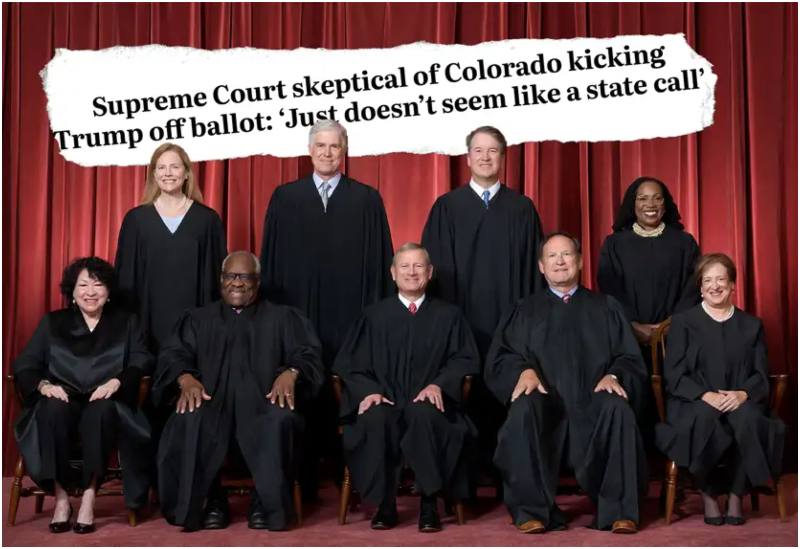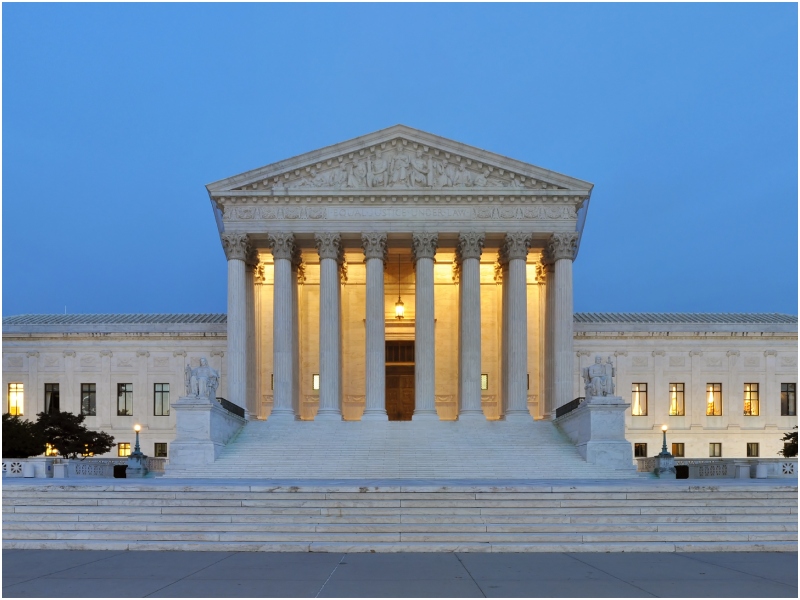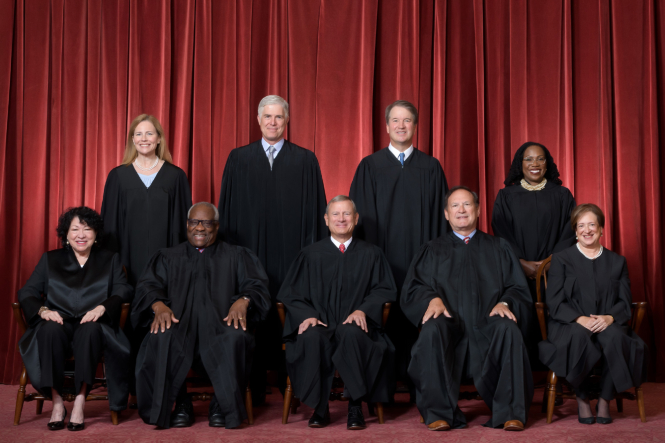The ideological makeup of the U.S. Supreme Court has already left a transformative imprint on American law—and the effects are only beginning to unfold.
Following a string of blockbuster decisions in the 2023–2024 term, including a controversial ruling on presidential immunity and a recent restriction on federal courts issuing nationwide injunctions, the Court’s new conservative supermajority is increasingly reshaping the balance of power between the branches of government.
With Justices like Ketanji Brown Jackson emerging as fierce dissents against the majority, the future direction of the Court is at once unsettling and pivotal to the legal integrity of the nation.
The Court’s New Landscape

Since 2020, the Supreme Court has experienced a profound ideological transformation. With the appointments of Justices Neil Gorsuch, Brett Kavanaugh, and Amy Coney Barrett by President Trump, and Justice Ketanji Brown Jackson by President Biden, the Court now reflects a 6–3 conservative majority—and the effects have been seismic.
Justice Jackson, the Court’s first Black woman, has rapidly become one of its most prolific voices—writing more opinions than nearly any other justice and making headlines for her pointed and accessible dissents. During the 2023–2024 term, she notably clashed with Justice Barrett over constitutional interpretation and historical context in multiple high-profile cases.
While Chief Justice John Roberts has attempted to steer the Court toward institutional stability, the new majority has increasingly aligned with an originalist and textualist approach, dramatically curbing the powers of federal agencies, expanding executive immunity, and undercutting longstanding legal norms around injunctions and reproductive rights.
Key Issues on the Docket—and Already Decided
The 2023–2024 term saw the Court take up—and rule on—some of the most consequential legal questions in modern history. With Justice Jackson often in dissent, the rulings underscore a profound shift in American constitutional law.
1. Presidential Immunity Upheld (Trump v. United States, 2024)
In a 6–3 ruling, the Court granted former presidents broad immunity from criminal prosecution for “official acts” while in office. The majority, led by Chief Justice Roberts, held that the separation of powers required shielding presidents from criminal liability when acting in their official capacity.
Justice Jackson’s dissent called the ruling “a seismic distortion of the rule of law,” warning that it placed the president “above the law” and invited future abuses of power. Legal analysts note this decision could have far-reaching implications not only for Donald Trump’s ongoing legal battles but for the presidency itself.
2. FDA Authority Upheld—but Abortion Access Still Under Siege
In FDA v. Alliance for Hippocratic Medicine, the Court unanimously rejected a challenge to the FDA’s approval of mifepristone, a medication commonly used for abortion. However, the Court dodged a ruling on broader abortion access by focusing on standing, leaving state-level restrictions intact.
Post-Dobbs, more than a dozen states have outlawed or severely limited abortion, and the Court’s silence on substantive rights continues to fuel legal uncertainty. Justice Jackson joined the majority but warned in a concurrence that procedural dismissals “cannot substitute for clarity on rights already erased.”
3. Nationwide Injunctions Curtailed (Department of Homeland Security v. Texas, 2024)
In another major decision, the Court barred federal district judges from issuing nationwide injunctions that block presidential executive orders. The 6–3 ruling argued such injunctions violated principles of judicial modesty and separation of powers.
Critics, including Justice Jackson in dissent, warned the ruling would “tie the hands of the judiciary in holding the executive branch accountable,” allowing potentially unconstitutional policies to remain in effect while litigation winds through the courts.
The Potential Impact of the Court’s Decisions
Each of these rulings signals a judicial rebalancing of power—away from regulatory agencies and trial courts, and toward a more insulated executive and deregulatory agenda. The implications are far-reaching:
- Presidential Authority: The Court’s immunity ruling may fundamentally alter how the justice system holds presidents accountable—even after they leave office. Legal scholars warn of a dangerous precedent for unchecked power.
- Judicial Oversight: By limiting nationwide injunctions, the Court is narrowing the lower courts’ ability to halt federal actions—raising concerns about localized harm without immediate nationwide remedies.
- Reproductive Rights: While the FDA decision maintained medication abortion access for now, state bans remain intact and legally insulated. The lack of direct guidance from the Court only deepens the post-Dobbs patchwork.
Justice Jackson’s growing voice in dissent emphasizes the urgency of legal clarity and public accountability. Her dissents increasingly act as roadmaps for future courts—and fuel for public debate.
The Future of the Supreme Court

The current 6–3 conservative majority shows no signs of yielding, but its internal dynamics are evolving. Justices Barrett and Kavanaugh have, at times, diverged from the hardline positions of Justices Thomas and Alito, while Chief Justice Roberts seeks to preserve the Court’s legitimacy amid public backlash.
Justice Jackson, meanwhile, is shaping up as a liberal lodestar—one whose dissents may be remembered as the conscience of the Court in an era of judicial upheaval.
The current Trump term could cement the current ideological bloc for decades. Regardless, the future of American law increasingly depends on how the current justices shape—and justify—their rulings.
Call to Action
The U.S. Supreme Court is not merely interpreting law—it is redefining the boundaries of government power and individual rights in real time. As legal professionals, journalists, and citizens, the responsibility to remain engaged has never been greater.
- Study and Reflect: Read the Court’s opinions—especially the dissents. Justice Jackson’s writings offer an accessible window into the evolving jurisprudential divide.
- Engage Respectfully: Discuss these rulings with colleagues, students, and community leaders. Informed dialogue is the foundation of a democratic society.
- Monitor What’s Next: With major cases on social media regulation, Chevron deference, and state powers on the 2025 docket, the Court’s influence will only deepen.
Let the rulings stand as a call—not to despair, but to awareness, advocacy, and democratic vigilance.

